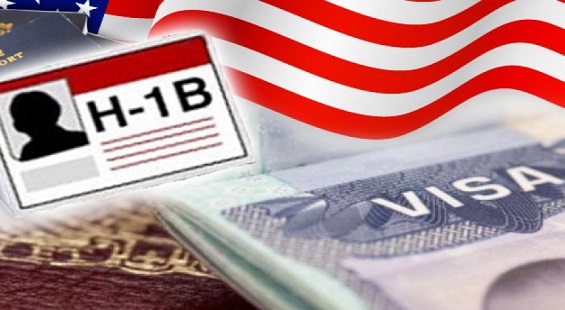H-1B denial rates low in post Trump era

 Low annual limit for H-1B petitions main problem facing employers trying to secure foreign-born talent
Low annual limit for H-1B petitions main problem facing employers trying to secure foreign-born talent
Denial rates of H-1B work visas coveted by Indian tech professionals have returned to low levels following the Trump administration’s losses in federal court during former President Donald Trump’s last year in office, according to new research.
This means the low annual limit for H-1B petitions is currently the main problem facing employers trying to secure foreign-born talent, according to a new analysis by the National Foundation for American Policy (NFAP), a nonpartisan research organization based in Arlington, Virginia.
Read: Biden lets Trump era H-1B visa ban expire (April 1, 2021)
In April 2022, US Citizenship and Immigration Services (USCIS) reported employers submitted over 483,000 H-1B registrations, almost 400,000 more than the 85,000-annual limit for H-1B petitions.
H-1B temporary visas are important because they generally represent the only practical way for a high-skilled foreign national, including an international student, to work long-term in the United States and have an opportunity to become an employment-based immigrant and a US citizen, NFAP said in a media release.
At US universities, more than 70% of full-time graduate students in electrical engineering and computer and information sciences are international students it noted.
“Despite the end of the Trump administration’s restrictive immigration policies that made US companies less competitive in the global battle for talent, companies in America still must deal with the low annual limit on H-1B petitions and employment-based green cards,” said Stuart Anderson, NFAP’s executive director.
“These and other policies encourage employers to send work and people outside the United States and make it difficult for many talented people to pursue their dreams in America.”
A 2022 NFAP study found 55% of America’s startup companies valued at $1 billion or more have at least one immigrant founder, illustrating the importance and contributions of immigrants to the US economy.
Read: Those hit by Trump ban may reapply for H-1B, other work visas (April 2, 2021)
The denial rate for (new) H-1B petitions for initial employment in FY 2022 was 2%. The H-1B denial rate declined during the final year of the Trump administration after judges declared many of its H-1B-related actions unlawful.
That forced a legal settlement and changes to restrictive immigration policies that resulted in the denial rate for new H-1B petitions for initial employment in FY 2021 dropping to 4%, far lower than the denial rate of 24% in FY 2018, 21% in FY 2019 and 13% in FY 2020.
H-1B petitions for “initial” employment are primarily for new employment, typically, for companies, a case that would count against the H-1B annual limit.
Absent significant changes in government policies, high denial rates are unusual since employers would be unlikely to apply for H-1B petitions for individuals who do not qualify, given the time and expense.
The NFAP analysis is based on data from the USCIS H-1B Employer Data Hub, according to a media release.
Read: H-1B Visa Denial Rate Drops (January 24, 2022)
Key findings
- The denial rate for H-1B petitions for initial employment was 2% in FY 2022, and 4% in FY 2021, the lowest known levels since data on H-1B denial rates became available.
- During the Trump administration, the denial rate for H-1B petitions for initial employment was much higher at 13% in FY 2017, 24% in FY 2018, 21% in FY 2019 and 13% in FY 2020. The denial rate in FY 2020 would have been higher if not for a legal settlement before the fourth quarter of FY 2020. Between FY 2010 and FY 2015, the denial rate for H-1B petitions for initial employment ranged between 5% and 8%.
- Amazon had the most approved H-1B petitions for initial employment in FY 2022, with 6,396. Amazon also had the most new H-1B petitions approved in FY 2021 and FY 2020.
- Infosys had the second most H-1B petitions in FY 2022 approved for initial employment at 3,151, which was approximately 2,000 fewer for the company than FY 2021.
- Next was TCS with 2,725, also lower than the previous year, followed by Cognizant (2,521), Google (1,562), Meta/Facebook (1,546), HCL America (1,260) and IBM (1,239). H-1B petitions are counted in the fiscal year they are approved, not in the cap year the H-1B visa holder begins to work.
- According to USCIS data, the median annual salary for H-1B visa holders was $108,000 in FY 2021. In computer-related occupations in FY 2021, the median salary for H-1B visa holders was $111,000, and the average salary in computer-related occupations was $118,000.
- A company could spend up to $31,000 to file an initial H-1B petition (for three years) and an extension for an additional three years based on an NFAP analysis of government fees and attorney costs.
- In January 2023, USCIS proposed a regulation that would significantly increase the fees for employers hiring H-1B visa holders.
- Nearly 70% of H-1B visa holders approved for initial employment in FY 2021 earned a master’s degree or higher, according to USCIS. At US universities, foreign nationals account for 74% of the full-time graduate students in electrical engineering, 72% in computer and information sciences, and 50% to 70% of full-time graduate students in statistics, civil engineering, materials sciences and pharmaceutical sciences.
- Without international students, it would likely be impossible to sustain graduate-level programs in key fields at many US universities.
- The 85,000 new H-1B petitions allowed each year for companies represent only 0.05% of the approximately 165 million people in the US labor force. Beginning in FY 2004, the supply of H-1B petitions has been exhausted every fiscal year up to the present.
- The denial rate for H-1B petitions for continuing employment was 2% in FY 2022 and FY 2021, much lower than the 12% denial rate in FY 2018 and FY 2019 and the lowest level since data on H-1B denial rates became available.
- H-1B petitions for “continuing” employment are usually extensions for existing employees at the same company or an H-1B visa holder changing to a new employer.
- Much of the increase in denials for continuing employment during the Trump administration was due to an October 2017 memo that instructed adjudicators to no longer “give deference to the findings of a previously approved petition.”
- Many extensions of H-1B status were reviewed under a new, more restrictive standard based on policies that judges later determined to be unlawful.
- Employers and attorneys credited USCIS Director Ur Jaddou and the Biden administration for rescinding the October 2017 memo, according to NFAP.

